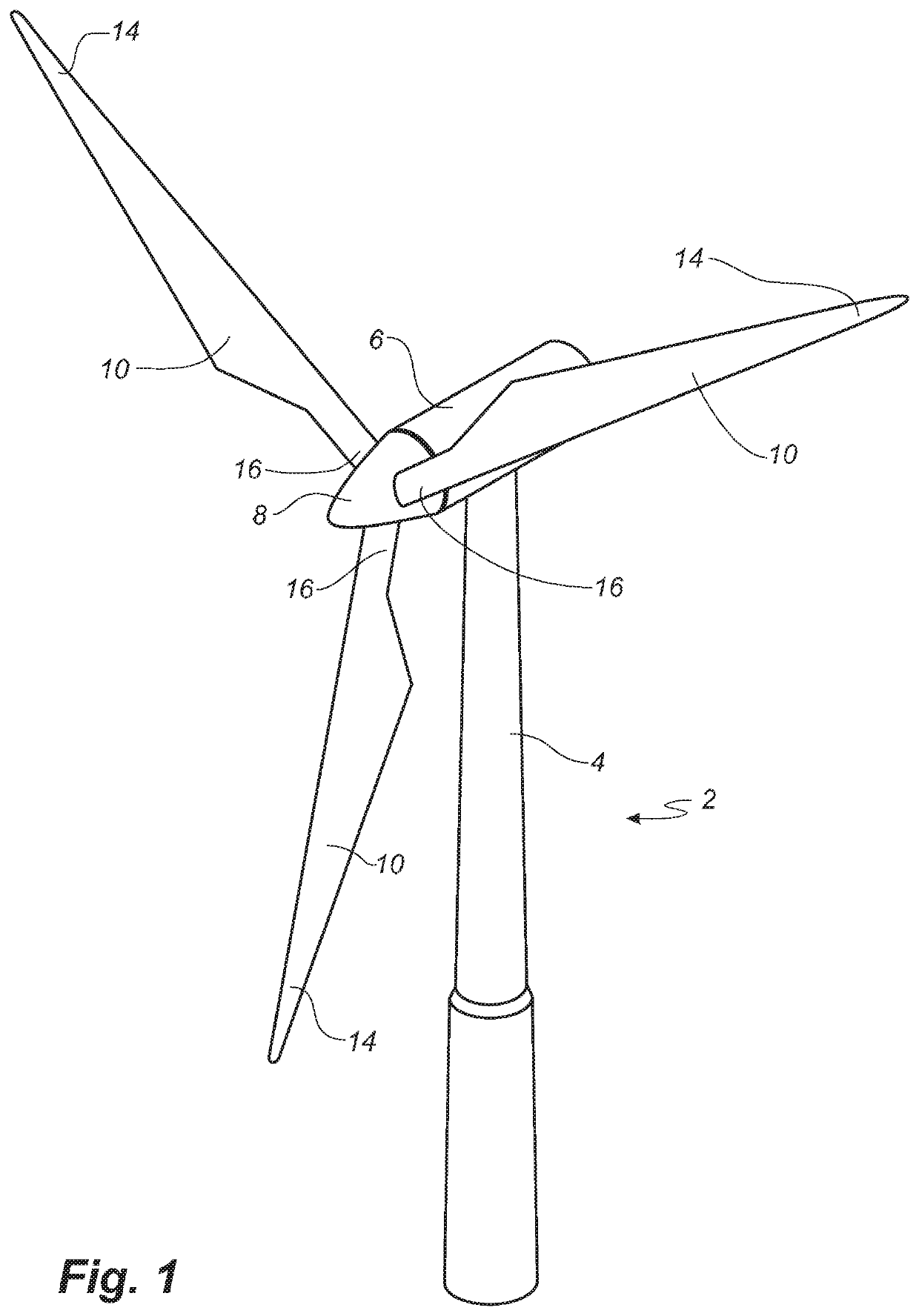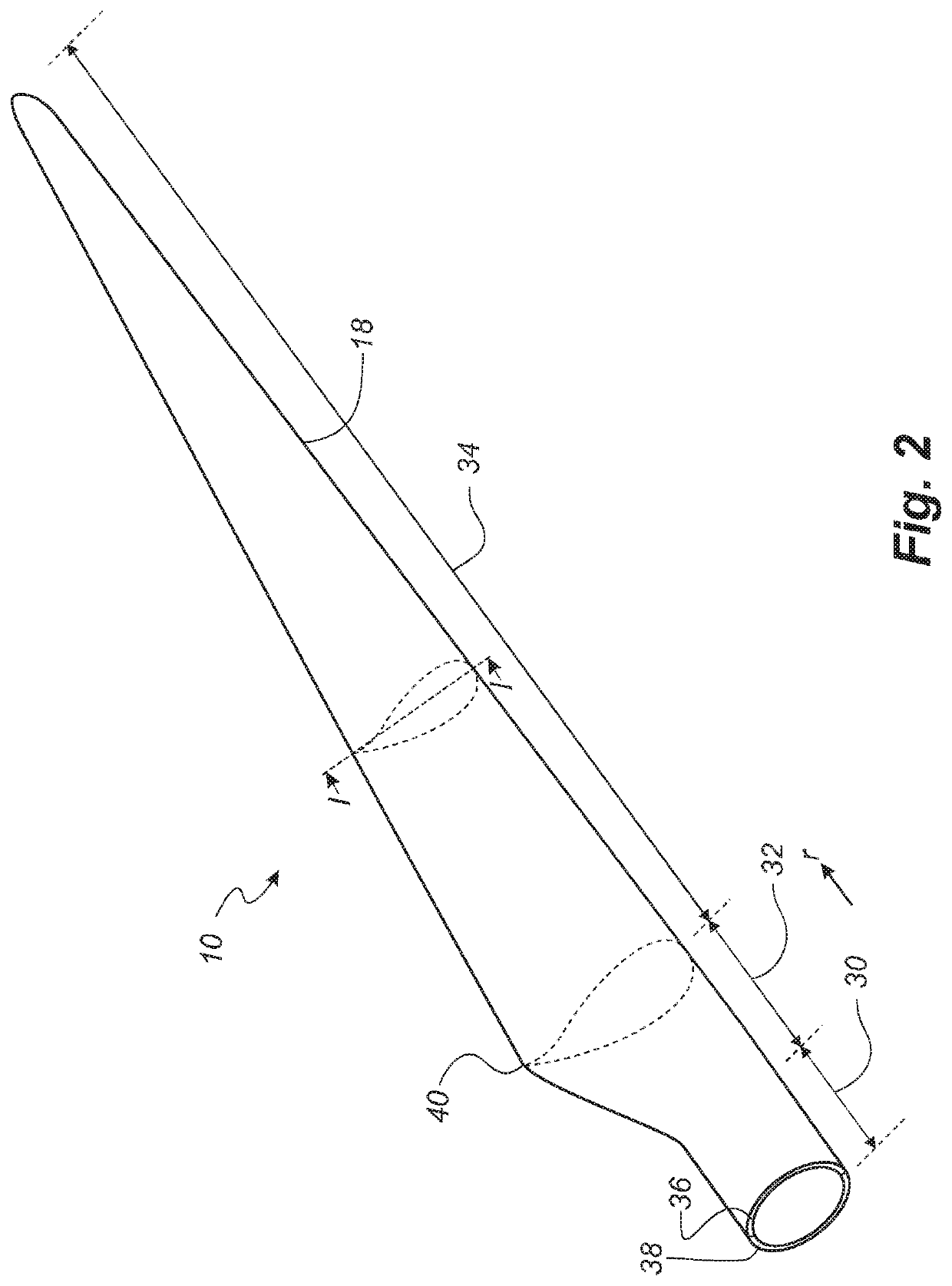Method of manufacturing a composite laminate structure
a manufacturing method and technology of composite laminates, applied in the manufacture of final products, machines/engines, manufacturing tools, etc., can solve the problems of significant reduction of conductivity between carbon fibre layers and inability to easily dissipate lighting current in the load carrying structur
- Summary
- Abstract
- Description
- Claims
- Application Information
AI Technical Summary
Benefits of technology
Problems solved by technology
Method used
Image
Examples
Embodiment Construction
[0028]Composite laminate structures of wind turbine blade parts can be manufactured by means of resin transfer moulding, preferably vacuum-assisted resin transfer moulding. In resin transfer moulding, the fibre-reinforcement material is impregnated with liquid resin in a mould cavity. The mould cavity is typically formed between a rigid mould part having a mould surface defining a surface of the wind turbine blade part and a flexible mould part. The resin disperses in all directions in the mould cavity as a flow front moves towards the resin-free area.
[0029]Over the years, the wind turbine blade industry has moved towards manufacture of longer and longer blade parts requiring thicker laminates. However, thick laminates makes it more difficult to obtain a proper wetting of the fibre layers, and the likelihood for air pockets to be formed in the laminate increases, which in turn may lead to mechanical weak points in the laminate. Thus, it is especially important to promote flow of res...
PUM
| Property | Measurement | Unit |
|---|---|---|
| angle | aaaaa | aaaaa |
| angle | aaaaa | aaaaa |
| angle | aaaaa | aaaaa |
Abstract
Description
Claims
Application Information
 Login to View More
Login to View More - R&D
- Intellectual Property
- Life Sciences
- Materials
- Tech Scout
- Unparalleled Data Quality
- Higher Quality Content
- 60% Fewer Hallucinations
Browse by: Latest US Patents, China's latest patents, Technical Efficacy Thesaurus, Application Domain, Technology Topic, Popular Technical Reports.
© 2025 PatSnap. All rights reserved.Legal|Privacy policy|Modern Slavery Act Transparency Statement|Sitemap|About US| Contact US: help@patsnap.com



